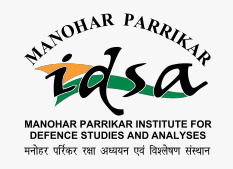Defence Public Sector Units and Exports
Defence exports by India in recent times have witnessed a significant surge. During the past decade, from 2013–23, India exported defence equipment worth about Rs 64,250 crore.1 Exports by the nine defence public sector units (DPSUs)2 accounted for 56 per cent of total defence exports in 2013–14 (and even stood as high as 97 per cent in 2014–15) but have since reduced to reach about 9 per cent in 2021–22.3 The volume of exports by the nine major DPSUs have no doubt increased during this period, from Rs 385 crore to Rs 1,126 crore, but given that the overall volume of defence exports from India has increased, the percentage share of the exports by DPSUs has reduced.
The share of the erstwhile Ordnance Factory Board (OFB) in the defence exports pie has reduced from nearly 3 per cent in 2013–14 to less than 1 per cent in 2021–22.4 In the period 2012–22, the cumulative value of OFB exports was about Rs 688 crore. The OFB’s biggest export order was for the supply of 40,000 155 mm shells to the United Arab Emirates in August 2019 worth over Rs 300 crore.
During the period 2013–22, defence exports by the nine major DPSUs were cumulatively worth around Rs 7,000 crores.5 BEL accounted for more than 33 per cent of the total, followed by HAL at 26 per cent and GSL at nearly 18 per cent. Some of the significant export items by DPSUs include offshore patrol vessel (OPV) and fast patrol vessels (FPVs) to countries like Sri Lanka and Mauritius, and helicopters to Nepal, Afghanistan, Mauritius, Seychelles, Namibia, Ecuador and Suriname.
DPSUs have also faced setbacks in their export efforts. GRSE, for instance, was shortlisted for delivery of two light frigates by the Philippines Navy. However, the Philippines gave the award to Hyundai Heavy Industries (HHI) in October 2016. While shipyards like GSL and GRSE have delivered ships to countries in India’s extended neighbourhood, the last export order for Mazagon Dock Limited (MDL) was a multi support vessel (MSV) to a Mexican company, more than a decade ago. Indian shipyards, though, have robust orders from the Indian Navy.
India’s aircraft exports primarily relate to various versions of the Dhruv helicopter to countries like Ecuador, Maldives, Mauritius and Nepal, maritime patrol aircraft to Sri Lanka, Seychelles, Namibia, light transport aircrafts to Mauritius, Cheetal helicopters to Afghanistan, among other countries. Apart from helicopters and patrol aircrafts, HAL’s exports have included engines, avionics, as well as structural work packages to major aerospace majors like Airbus, Boeing, Israel Aircraft Industries (IAI), Rolls Royce, RUAG, Turbomeca, Safran engines, among others.6
HAL has carried out these exports successfully meeting the stringent reliability, quality and delivery specifications of these aerospace majors. Some of these exports have been carried out as part of the various offset contracts secured by the company. HAL has also carried out overhauls of aero engines for Namibian Air Force and Mauritius police Force.7
In order to expand its global export footprint, HAL has been actively responding to RFIs. The Light Combat Aircraft (LCA), Tejas was shortlisted by Royal Malaysian Air Force (RMAF). The RMAF however chose the Korean FA-50 aircraft in early 2023, in a deal valued at over US$ 900 mn for 18 aircraft.
HAL also received interest from the Philippines Coast Guard for procurement of seven Advanced Light Helicopters (ALH) and eight DO-228 aircraft through Government of India Line of Credit (LoC). The HAL was reportedly up against Airbus Panther AS565 for this particular contract.8
India’s defence exports under the category of ‘Sensors’ meanwhile primarily relate to exports by BEL of artillery locating radars to Armenia, air search radars to Myanmar and Sri Lanka, and maritime patrol aircraft radars to Seychelles.
India’s defence exports push is part of its effort to become a part of the global defence value chain and one of the leading countries in the defence sector. In a significant development, Philippines in January 2022 signed a US$ 375 million contract for the anti-ship variant of the BrahMos supersonic cruise missile, made by the Indo-Russian joint venture, BrahMos Aerospace.
India aims to achieve a defence exports target of Rs 35,000 crore by 2025. Research and Development (R&D) and focus on innovation are critical to help achieve these targets as well as to sustain the momentum. Among DPSUs, the R&D spend of DPSU behemoths like BEL and HAL at around 7–8 per cent of sales is on a relatively sound footing.
DPSUs have been making efforts to increase their marketing footprint, by opening marketing offices abroad. Most recently, Raksha Mantri Rajnath Singh inaugurated HAL’s office in Kuala Lumpur in July 2023. DPSUs have also proposed strategic alliances with foreign Original Equipment Manufacturers (OEMs). Such strategic partnerships need to be leveraged effectively though to penetrate global markets.
Going forward, DPSUs will continue to face a highly competitive export market for defence products. It is a fact that the DPSUs are some of the biggest defence companies in the world in terms of sales, though mostly to the Indian armed forces. HAL was ranked at the 42nd position while BEL was ranked at the 63rd position among SIPRI Top 100 defence companies in the world in 2021.9
With the government’s emphasis on ‘Atmanirbharta’ and ambitious targets relating to defence production, defence indigenisation and defence exports, the ability of the DPSUs to contribute to the defence exports pie will continue to be in focus.
Views expressed are of the author and do not necessarily reflect the views of the Manohar Parrikar IDSA or of the Government of India.
- 1. “Department of Defence Production”, Ministry of Defence, Government of India.
- 2. Bharat Dynamics Limited (BDL); Bharat Electronics Limited (BEL); Bharat Earth Movers Limited (BEML); Garden Reach Shipbuilders and Engineers (GRSE); Goa Shipyard Limited (GSL); Hindustan Aeronautics Limited (HAL); Hindustan Shipyard Limited (HSL); Mazagon Dock Shipbuilders Limited (MDL); and Mishra Dhatu Nigam (MIDHANI). Post corporatisation of the Ordnance Factory Board in mid-2021, 41 ordnance factories of the OFB were reconstituted as seven new corporate entities in mid-2021. There are therefore a total of 16 DPSUs currently.
- 3. DPSU Annual Reports (Various Years); “Reports of the Standing Committee on Defence” (Various Years), Lok Sabha.
- 4. “Reports of the Standing Committee on Defence” (Various Years), Lok Sabha. The 2021–22 percentage share pertains to the exports of the seven new DPSUs.
- 5. “Performance and Audit Reports” (Various Years); Comptroller and Auditor General of India, “Reports of the Standing Committee on Defence” (Various Years), Lok Sabha; and DPSU Annual Reports (Various Years). DPSU exports include defence as well as civil exports. Some DPSUs export equipment relating to verticals like Rail and Metro, Mining and Construction (as in case of BEML) and Space and Energy (as in case of MIDHANI), apart from defence equipment. The figure mentioned does not include DPSU civil exports.
- 6. “Annual Reports”, Various Years, Hindustan Aeronautics Limited.
- 7. Ibid.
- 8. Ajai Shukla, “India Closes In on Chopper Export to the Philippines”, The Business Standard, 1 December 2021. Issues regarding reliability of the helicopter though were raised in the light of accidents which led to a temporary grounding of the ALH fleet of the Indian armed forces. Vishnu Som, “Army Clears Grounded ‘Dhruv’ Chopper Fleet For Flight, But Conditions Apply”, NDTV, 31 May 2023.
- 9. “The SIPRI Top 100 Arms-producing and Military Services Companies, 2021”, Stockholm International Peace Research Institute.




